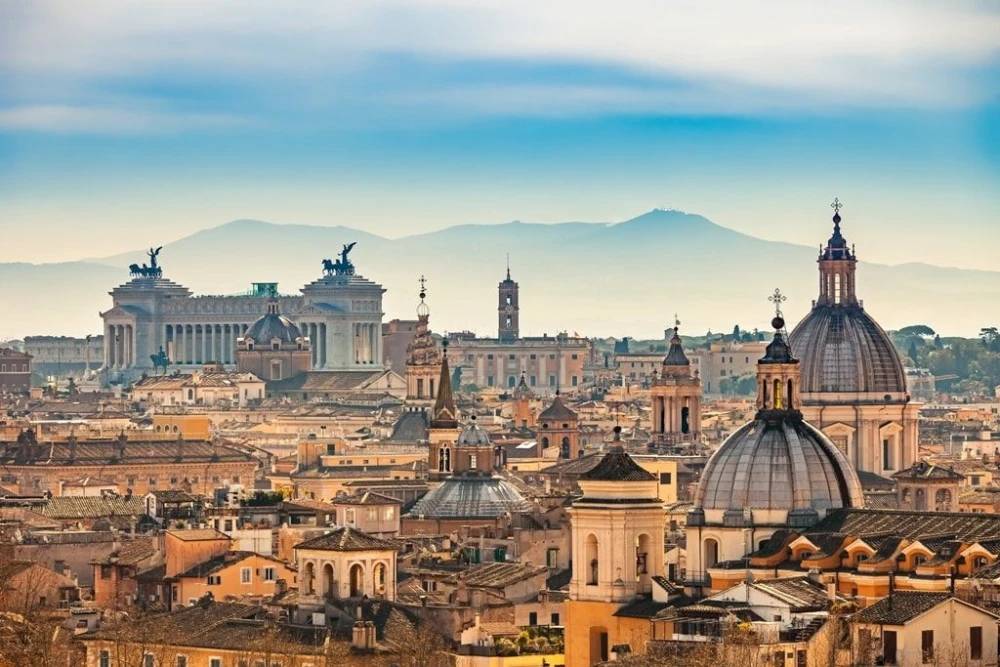15124, Maroysi, Athens, Greece
Piraeus/Athens, Nauplia, Katakolon (Ancient Olympia), Corfu, Kotor, Brindisi, Lipari, Naples, Civitavecchia (Rome)


Piraeus port is the gateway to Athens center. Don't miss the Parthenon, the temple to Athena which looms over Athens from its perch atop the Acropolis, an eternal icon of art and civilization. Completed in 438 B.C., the temple still astounds as the flowering of Greek art and architecture. When you come down off the hill, don't miss a visit to the Ancient Agora, Syntagma Square, the Acropolis Museum and the city's historic centre, around Plaka. Ideally, sit and relax at a cafe on the foot of the hill, sample some Greek souvlaki or a frappe, take a glance back up the hill from time to time and give the goddess her due.

Katakolon Port occupies the north-west part of the Peloponnese. To the west it is washed by the Ionian Sea. It is the current harbor of the regions capital city Pyrgos and serves as the gateway to the site of ancient Olympia, one of the most important archaeological sites in the world and birthplace of the Olympic Games. Visitors can see the remains of the original Olympic stadium, the Bouleuterion and the Temple of Zeus, enjoy free time in modern Olympiato shop or visit the Museum of the Olympic Games.

Fortresses flank your entrance to magnificent Corfu, one of the most beautiful of the Ionian Islands. Lose yourself in the Venetian old town or head north of the island, for dramatic seascapes. Explore the legacies of Greek, Roman and Venetian Empires or simply marvel at nature’s treasures that are hidden in this beautiful island, swathed in emerald green, lapped by turquoise waters and fringed with golden sand. The once pastel colours on Venetian buildings may have faded, but the welcoming scent of eucalyptus, fig and lemon trees are fragrant as ever.

Kotor, which was first settled during the days of ancient Rome, is located along one of Montenegro's most beautiful fjord-like bays. It is a precious gem, with a well preserved urban center, which hosts ample medieval architecture and numerous monuments of cultural heritage that have designated the town, a UNESCO “World Natural and Historical Heritage Site". Walking along the streets and alleys, you will enjoy a fairy-tale setting, where medieval spires rise dreamily over orange rooftops beside mountainous scenery.

Is a city in the region of Apulia in southern Italy, the capital of the province of Brindisi, on the coast of the Adriatic Sea. Historically, the city has played an important role in trade and culture, due to its strategic position on the Italian Peninsula and its natural port on the Adriatic Sea. The city remains a major port for trade with Greece and the Middle East. Brindisi's most flourishing industries include agriculture, chemical works, and the generation of electricity. The city preserves important archaeological finds and coastline, particularly the north coast, where there are many large sand dunes and beaches.
Lipari is the largest, busiest and most accessible of the eight Aeolian Islands, located in the volcanic archipelago off the north coast of Sicily, in the Tyrrhenian Sea. Traces of human history date back to 5.000 BC, revealing a rich past, which is depicted on the many archeological wonders, such as the 16th c. walled fortress, built upon an ancient Greek acropolis and also some Greek and Roman ruins visible in the Diana District Archeological Park. In your free time, wander through the shops on Corso Vittorio Emanuele, check out a largely reconstructed Norman-era church and a fine archeological museum or choose a scenic driving tour to witness stunning Mediterranean views.

Naples is the third-largest municipality in Italy, after Rome and Milan and one of the chief commercial cities of Europe. The city center has been designated a UNESCO World Heritage Site and the surrounding areas are dotted with cultural and historical treasures, with most notable, the restored ruins of Pompeii. Naples itself is mere enduring greatness. Highlights include Castel dell' Ovo, Castelnuovo, Castel Sant'Elmo, a medieval fortress located on a hilltop and national museums dedicated to art and archaeology. There is also a docile bay; the peaceful cypress-tufted islands of Ischia, Procida and Capri and over the city, Mount Vesuvius, volcano and national park. Take the opportunity to see the only active volcano on the European mainland, which blew in A.D. 79 and buried the city of Pompeii, or visit the magnificent Amalfi and Sorrento coasts.

Our gateway to the Eternal City, Civitavecchia has served as Rome's seaport since the 13th century, boasting a long and venerable history. Its location near the modern city, made it a perfect vacation resort for emperor Trajan, who built a pleasure villa. while Bernini and Michelangelo designed the harbor fortifications. Yet the Eternal City, the ancient capital of the Western World and the center of Christianity for nearly 2.000 years, is our main reason to be here. YYou can visit the ruins of the Forum and the Colosseum, throw a coin in Fontana di Trevi to make sure you return to Rome one day, take a photo in front of the Vatican, view the splendors of the Sistine Chapel or climb the Spanish Steps, once the heart of Rome's Bohemian Quarter and enjoy a delicious gelato, in the glamorous area.
Itinerary







